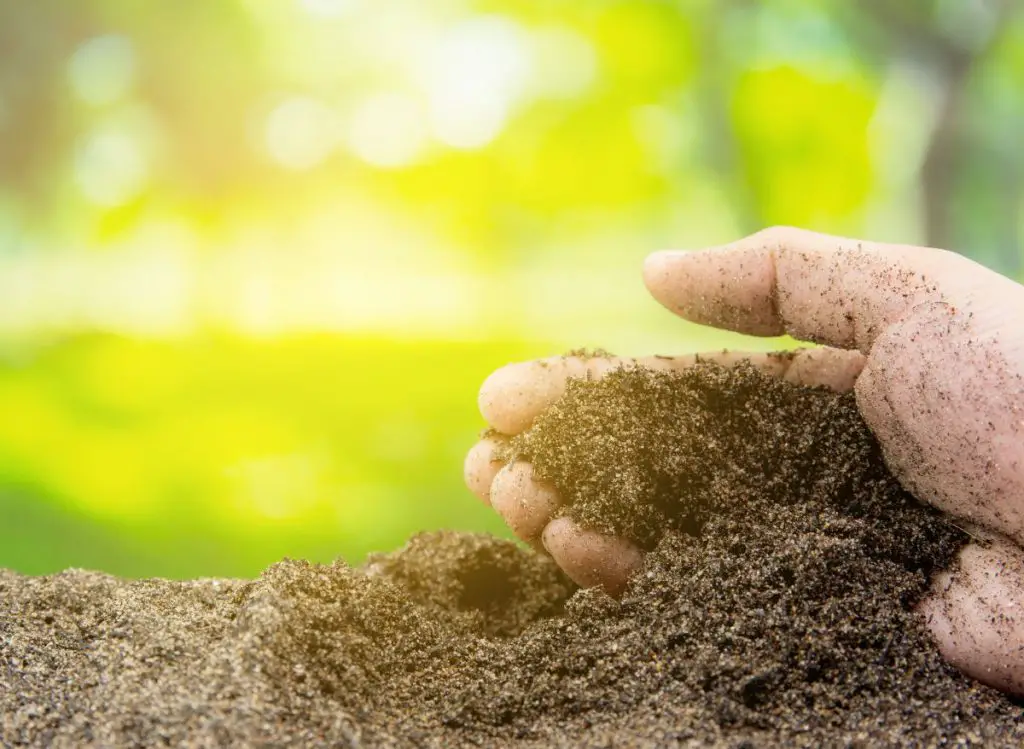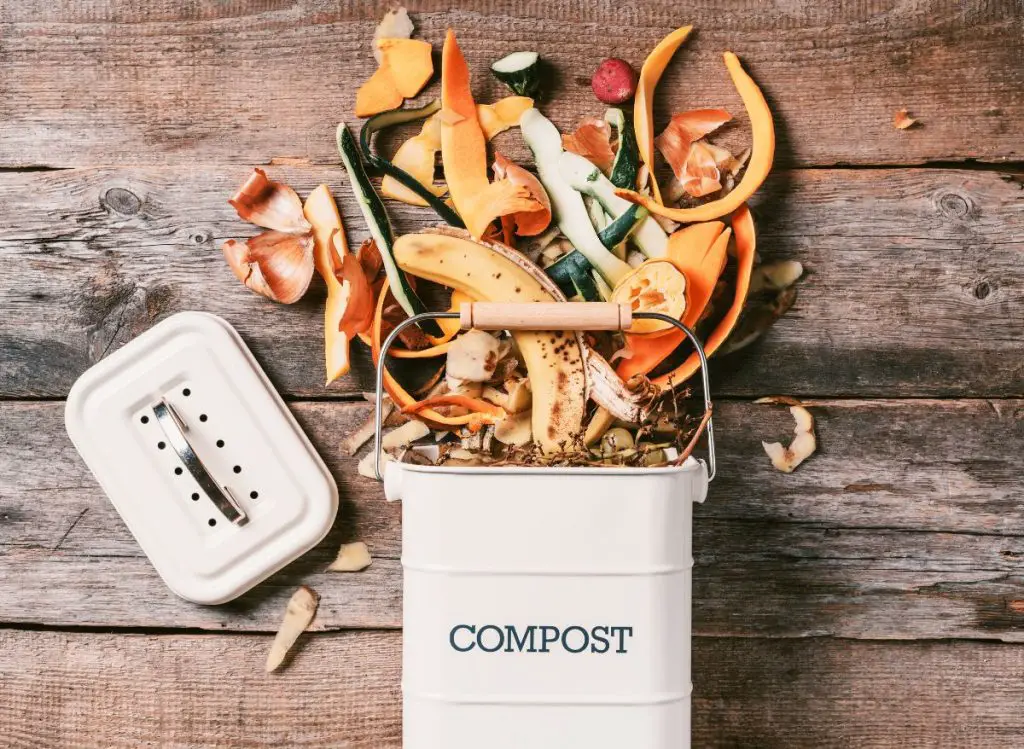This post contains affiliate links.

Iron is an essential element in soil that promotes healthy growth of plants, but too much of it can cause problems.
When there is excess iron in your soil, plants can suffer from iron toxicity, which can lead to stunted growth, root damage, and reduced yields. In addition, high levels of iron in soil can impact soil structure and quality, making it harder for plants to absorb nutrients and water.
If you are experiencing issues with iron in your soil, don’t worry! read on to find out how to reduce iron in soil and help your plants thrive. Check out this article if you wonder how too much Iron in your lawn can affect its health.
1- Test Your Soil
The first step in reducing iron in soil is to test your soil. Knowing the exact iron levels in your soil will enable you to determine the appropriate treatment required to reduce the iron content. You can purchase a soil testing kit from your local garden center or online (Amazon).
You want to look for the pH levels of your soil. If your soil has a pH level of less than 6.0, you may be experiencing high levels of iron (Source: University of Minnesota). If this is the case, it is essential to know the exact pH level of your soil to balance any chemical solution to manage iron levels accurately. If your soil has a high pH level, reducing it will also help reduce iron levels.
With pH levels above 7.0, less iron, boron, zinc, and copper will be available to your plant, even if there are sufficient amounts in the soil, according to the University of Minnesota.

2- Apply Lime to Your Soil
There are several ways to balance out soil pH levels, but the most common solution is to apply lime. Lime is a calcium-based substance that can neutralize the acidity in soil by raising its pH level (Source: North Carolina State University)
Lime is the most effective treatment for iron and reduces its quantity in the soil. In addition, lime boosts the soil’s pH, which makes soil less acidic and more alkaline.
Lime can improve soil structure and promote better plant growth by reducing iron build-up and other soil contaminants. Depending on the severity of the iron issue, it may be best to consult a soil expert who can give you the appropriate amount of lime to add to your garden.
3- Use Organic Mulch
Organic mulch, such as wood chips, straw, and leaves, is a natural solution for iron-rich soil. Organic mulch steadily decomposes over time, adding organic matter to the soil and assisting in building remediation of excess iron deposits.
The organic matter in mulch can also release hydrogen ions, which can reduce soil acidity and improve plant health. Using organic mulch has other benefits, too; it can conserve water, suppress weeds, and improve the look of your garden, creating an overall healthy environment for your plants.
Also, improved organic matter helps the soil retain plant nutrients, including iron, potassium, magnesium, and calcium (Source: Michigan State University)
4- Plant Iron-tolerant Crops
If your soil has high iron levels, you may want to consider planting iron-tolerant crops, including kale, spinach, and Swiss chard. These vegetables pack plenty of iron, but they can survive in iron-rich soil without experiencing toxicity levels.
There are also options, such as beans, tomatoes, and peas, that thrive in neutral soil. Planting these crops instead of iron-sensitive ones will reduce the need for changes in soil and overall care.
The table below shows a list of common crops and their optimal pH level.
| pH Level | Plants |
| pH level between 6.0 to 7.0 (Neutral-acidic) | – Potato – Raspberry – Strawberry – Grape |
| pH level between 6.5 to 7.5 (Near neutral) | – Grape – Tomato – Pepper – Pumpkin – Peach – Squash – Radish – Beans – Corn Cucumber – Beets – Chives – Broccoli – Peas – Melons |
| pH level between 7.0 to 8.0 (Neutral-alkaline) | – Carrot – Spinach – Lettuce – Parsley – Asparagus – Cabbage – Beets – Celery – Cauliflower |
5- Chelating Agents
Chelating agents are commonly used to keep iron from binding with soil and other elements by changing the structure of iron in the soil, making it no longer available to plants.
While there are synthetic chelates available, they can be harmful to the environment and can create other issues. Natural chelates such as citric acid, malic acid, and vinegar can work well in reducing iron without affecting the soil’s pH level.
If you want to learn more about how to apply chelated fertilizer effectively, I encourage you to check out this article from the University of Florida.
6- Organic Matter and Aerating the Soil
In addition to adding mulch to reduce iron, adding organic matter such as compost and leaf litter can also help reduce the iron content of soil.
The addition of organic matter will promote microbial activity, which will create a chelating effect on iron. More importantly, aerating the soil also promotes microbial activity and helps the soil return to a healthy state.

7- Iron Reduction Supplements
Iron reduction supplements can provide a quick solution to reduce iron content in soil. Through a chemical reaction, these supplements will change the structure of iron, allowing plants to absorb it more easily.
However, remember that excessive usage of these chemical fertilizers can lead to toxicity and long-term soil damage. I encourage you to follow instructions on the packaging of chemically based iron reduction supplements.
The table below contains iron fertilizer sources that can help correct iron deficiency in plants.
| Product | Correction Time |
| Iron chelates | About 1 to 3 weeks |
| Iron sulfate | – Granular fertilizer will take between 2 to 4 years – Liquid fertilizer will take between 2 to 3 weeks |
| Ferric ammonium citrate | About 4 to 6 weeks |
| Slow release iron | – Correction time is faster for potted plants between 2 to 4 weeks – Correction time is moderate for landscape plants taking between 1 to 3 months |
8- Limit Watering and Drainage System
Sometimes, waterlogged soil can lead to reduced oxygen levels, causing an increase in iron availability. To help avoid waterlogged soil, ensure your soil is free-draining.
Adding soil conditioners, including sand or perlite, can help promote healthier soil. In addition, controlling the amount of water used in the garden can help reduce the iron content in soil.
What to read next:
- How To Quickly Deal With Too Much Iron In Your Garden’s Soil: A Guide.
- Understanding Iron Deficiency in Your Plants: The Best Sources of Iron to Combat It!
- Identifying and Treating Common Pests and Diseases for Strawberry Plants.
Wrapping Up
Reducing iron in soil can help promote the growth of healthy plants and bring higher yields. Testing your soil and knowing its pH levels is critical in dealing with iron toxicity. Balancing soil acidity with lime, using organic mulch, and planting iron-tolerant crops can help reduce iron levels in the soil.
I encourage you to pay close attention to usage instructions when using chemically-based iron reduction supplements.
And remember, the more you know about your soil, the more likely you are to build a successful, long-term garden that produces excellence.

